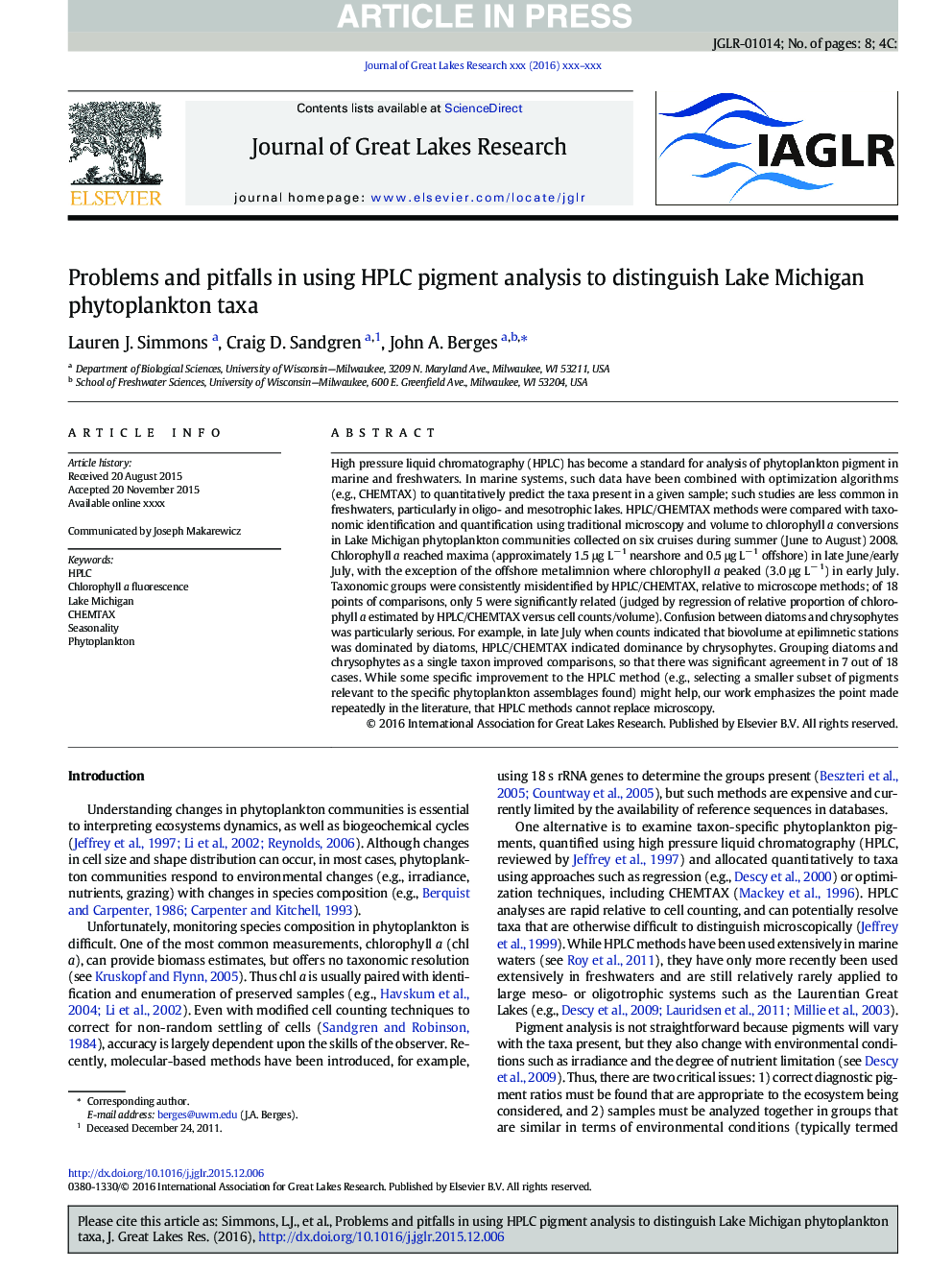| Article ID | Journal | Published Year | Pages | File Type |
|---|---|---|---|---|
| 6304759 | Journal of Great Lakes Research | 2016 | 8 Pages |
Abstract
High pressure liquid chromatography (HPLC) has become a standard for analysis of phytoplankton pigment in marine and freshwaters. In marine systems, such data have been combined with optimization algorithms (e.g., CHEMTAX) to quantitatively predict the taxa present in a given sample; such studies are less common in freshwaters, particularly in oligo- and mesotrophic lakes. HPLC/CHEMTAX methods were compared with taxonomic identification and quantification using traditional microscopy and volume to chlorophyll a conversions in Lake Michigan phytoplankton communities collected on six cruises during summer (June to August) 2008. Chlorophyll a reached maxima (approximately 1.5 μg Lâ 1 nearshore and 0.5 μg Lâ 1 offshore) in late June/early July, with the exception of the offshore metalimnion where chlorophyll a peaked (3.0 μg Lâ 1) in early July. Taxonomic groups were consistently misidentified by HPLC/CHEMTAX, relative to microscope methods; of 18 points of comparisons, only 5 were significantly related (judged by regression of relative proportion of chlorophyll a estimated by HPLC/CHEMTAX versus cell counts/volume). Confusion between diatoms and chrysophytes was particularly serious. For example, in late July when counts indicated that biovolume at epilimnetic stations was dominated by diatoms, HPLC/CHEMTAX indicated dominance by chrysophytes. Grouping diatoms and chrysophytes as a single taxon improved comparisons, so that there was significant agreement in 7 out of 18 cases. While some specific improvement to the HPLC method (e.g., selecting a smaller subset of pigments relevant to the specific phytoplankton assemblages found) might help, our work emphasizes the point made repeatedly in the literature, that HPLC methods cannot replace microscopy.
Related Topics
Physical Sciences and Engineering
Earth and Planetary Sciences
Earth and Planetary Sciences (General)
Authors
Lauren J. Simmons, Craig D. Sandgren, John A. Berges,
